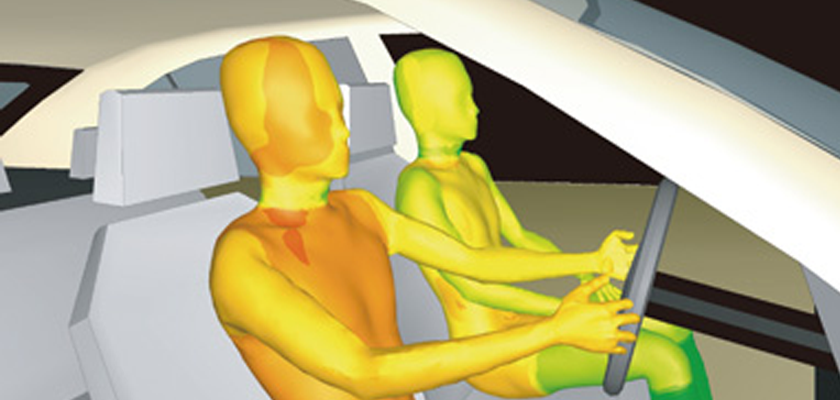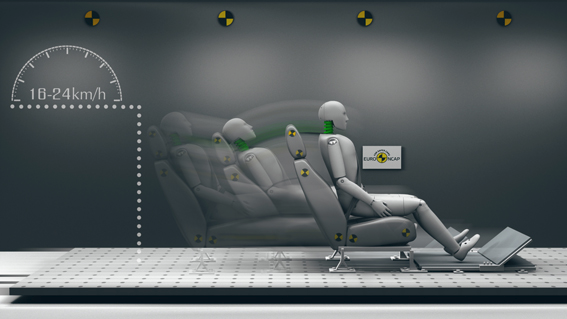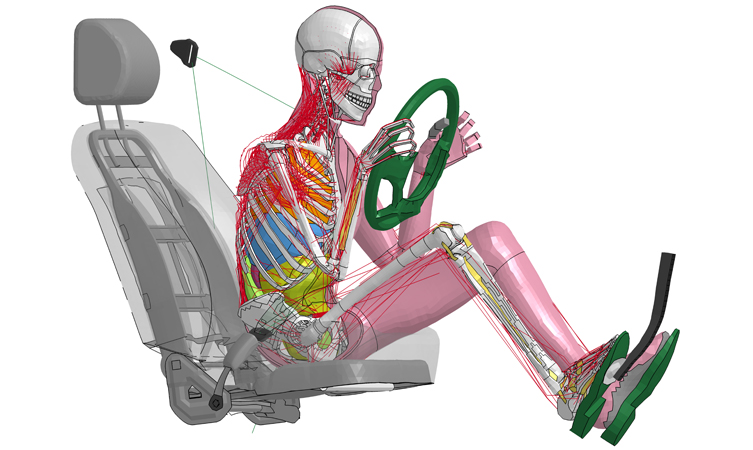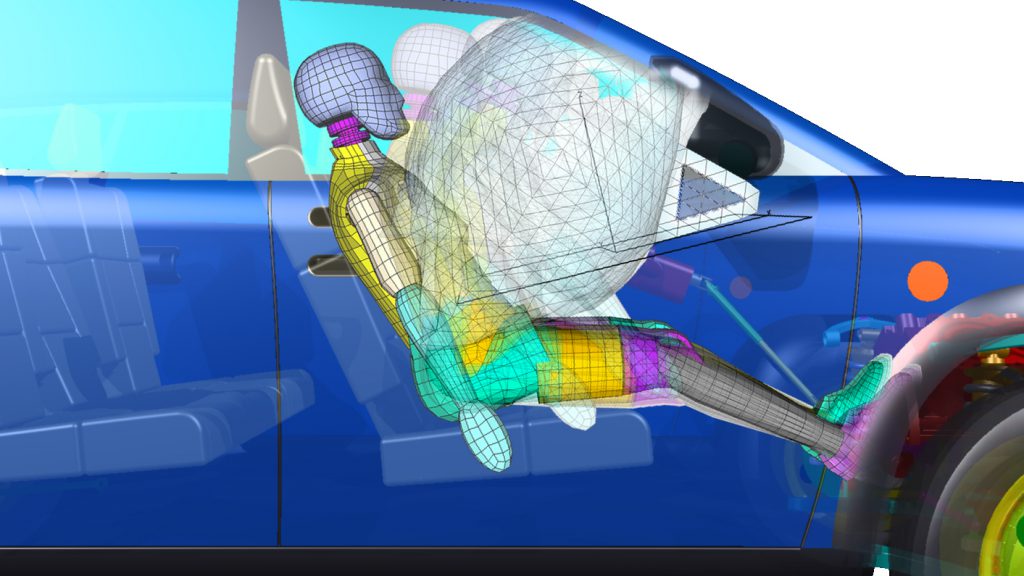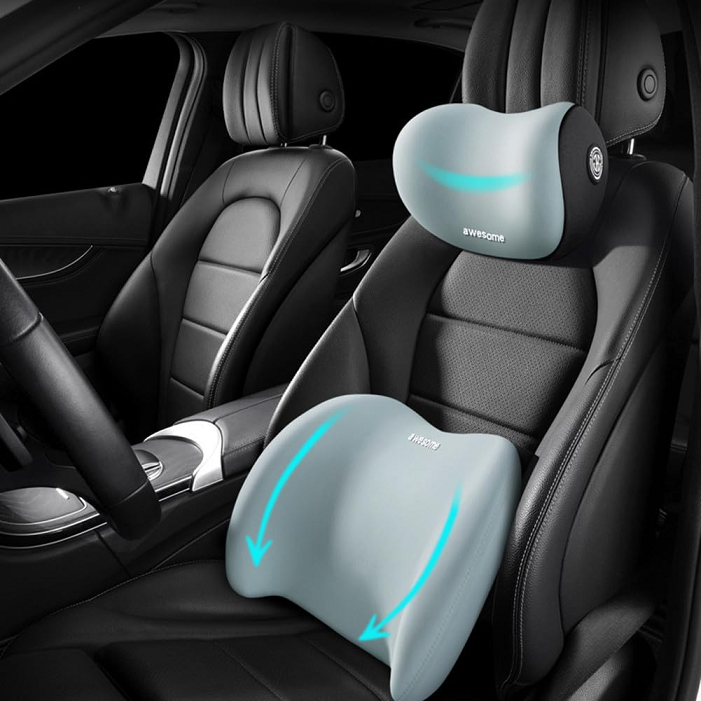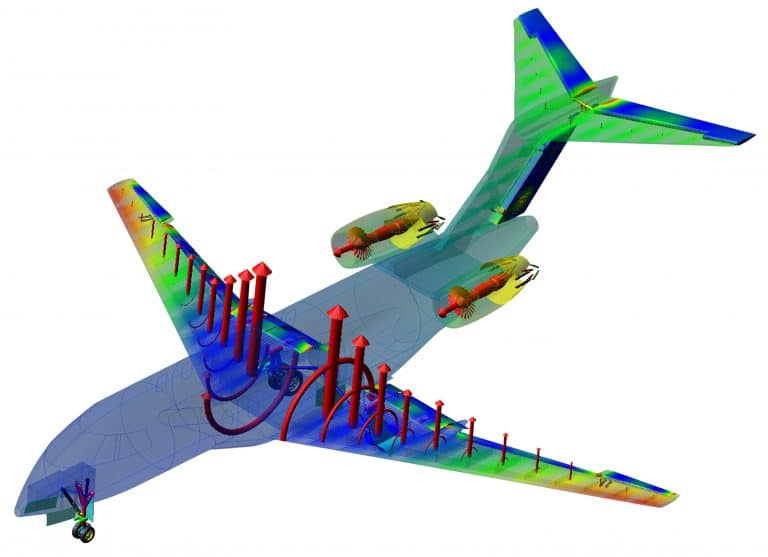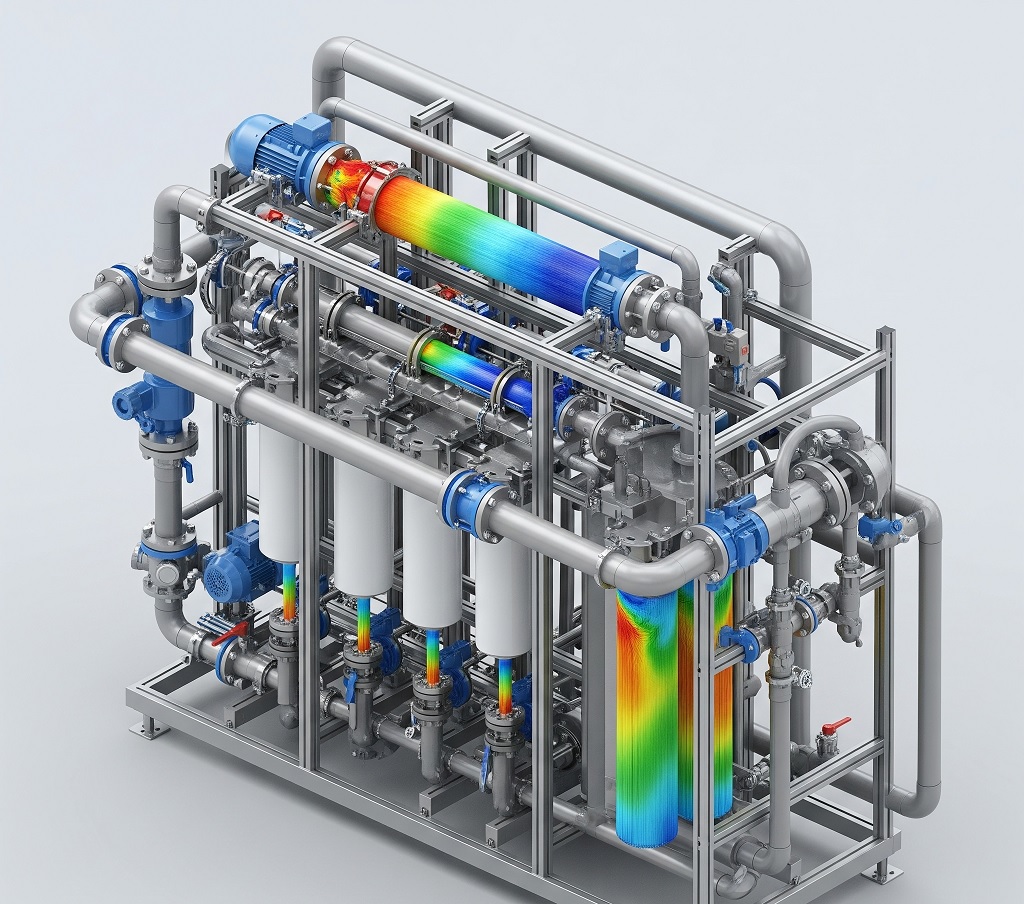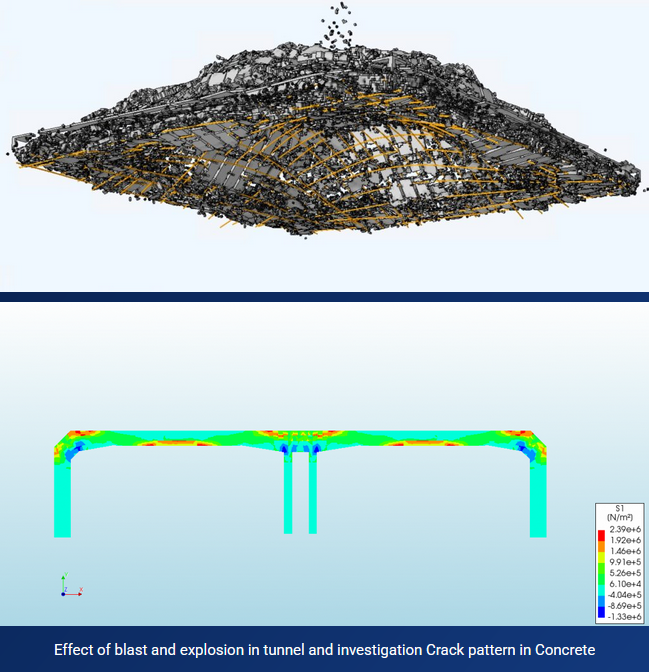Although whiplash injuries can occur in any kind of crash, an occupant’s chances of sustaining this type of injury are greatest in rear-end collisions.
When a vehicle is struck from behind, typically several things occur in quick succession to an occupant of that vehicle.
First, from the occupant’s frame of reference, the back of the seat moves forward into his or her torso, straightening the spine and forcing the head to rise vertically.
Second, as the seat pushes the occupant’s body forward, the unrestrained head tends to lag behind.
This causes the neck to change shape, first taking on an S-shape and then bending backward.
Third, the forces on the neck accelerate the head, which catches up with — and, depending on the seat back stiffness and whether the occupant is using a shoulder belt, passes — the restrained torso.
This motion of the head and neck, which is like the lash of a whip, gives the resulting neck injuries their popular name.
Finite Element simulation with advanced FEA software enables us to simulate seat whiplash with the most detailed and accurate procedure to capture real-world behavior.
Euro NCAP’s whiplash testing procedure
involves a rear-end collision simulation with a crash test dummy sitting in the driver’s seat.
The dummy is equipped with sensors that measure the forces exerted on the neck during the crash.
The resulting data is used to calculate a Whiplash Injury Criterion (WIC) score, which is used to assess the seat’s performance.
Japan NCAP’s whiplash testing procedure is similar to Euro NCAP’s, but it uses a different crash test dummy and has slightly different test conditions.
China NCAP’s whiplash testing procedure is also similar to Euro NCAP’s, but it includes additional test conditions to simulate different crash scenarios.
These regulatory testing procedures aim to ensure that automotive seats provide adequate protection against whiplash injuries in the event of a rear-end collision.
Finite Element simulation with Ansys LS-DYNA, Simulia Abaqus, ESI Pam-Crash and Altair RADIOSS, combined with special-purpose dummies, is used by our engineers to improve the accuracy of these tests and help optimize the design of seats for better whiplash protection.
